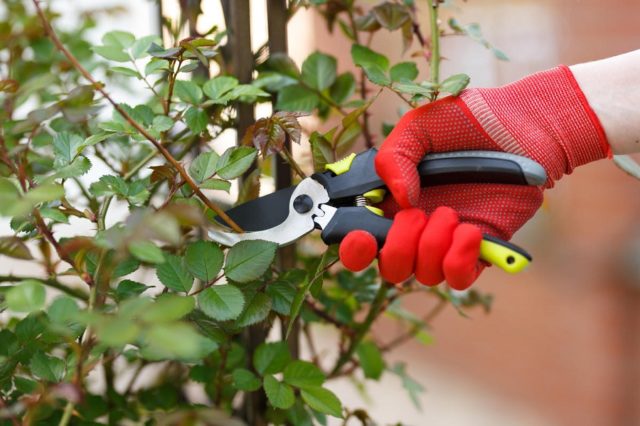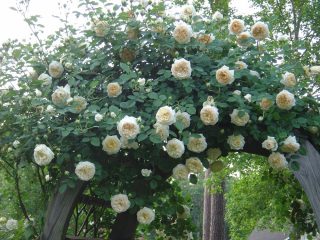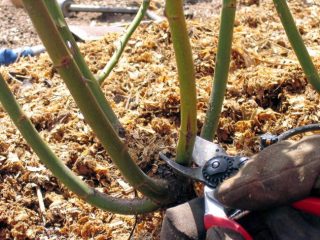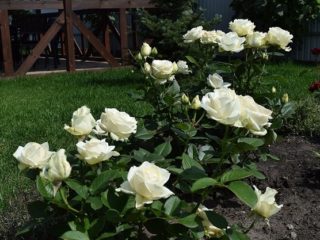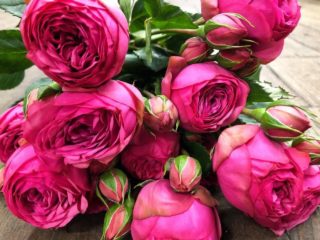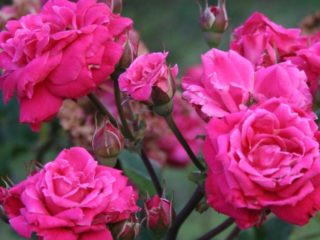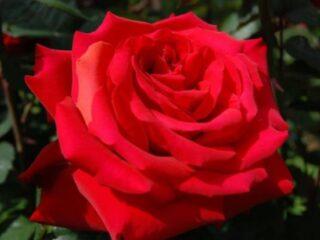Content
- 1 History of selection
- 2 Description and characteristics of the climbing rose variety Schneewaltser
- 3 Advantages and disadvantages
- 4 Reproduction methods
- 5 Planting and caring for the climbing rose Schneewaltser
- 6 Pests and diseases
- 7 Application in landscape design
- 8 Conclusion
- 9 Reviews of the climbing rose Schneewaltser
The climbing rose Schneewaltzer is very popular among gardeners in Scandinavia, Western Europe, China and Japan. In Russia, the variety is also known quite well. Its huge white flowers delight rose connoisseurs. The climbing bush has characteristic features and properties that you should know before planting it.
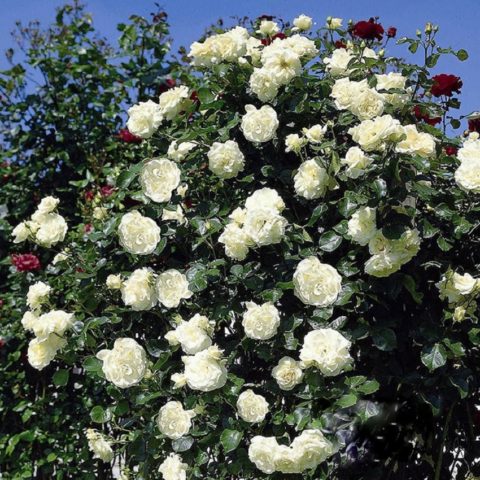
An amazing variety that can be grown in any region
History of selection
Even from the name it becomes clear that the climbing variety was bred by German scientists. Its author is the breeder Hans Jürgen Evers, who carried out work at the Tantau nursery. The rose was first introduced in 1987 under the name Snow Waltz, or Snow Waltz. There are also other names for the rose variety - Schneewalzer 87 among the Germans and Valse des Neiges in France. The parental forms are unknown, and so far there is no information about the awards of the Schneewaltzer rose.
Description and characteristics of the climbing rose variety Schneewaltser
The species is difficult to confuse with others. The rose is very different with its unique flowers. External parameters of the variety:
- Bush. This is a perennial liana, the height of which in adulthood reaches about 3 m. The width of the crown is up to 2 m. In terms of its size, the rose variety occupies an area of 2.0-2.5 square meters. m. Gains weight very quickly. The bush is vigorous and branched.
- Escapes. Old branches are very thick. Sometimes the diameter reaches the thickness of an adult’s wrist. New shoots are flexible and non-rigid. However, laying them on the ground for shelter for the winter will not work. The thorns of the Schneewaltser rose are large, but the number is small.
- Leaves. Beautiful, rich green color. Unpaired, large, with a shiny surface. The shape is oval-round, the apex is weakly expressed.
- Flower reminiscent of hybrid tea varieties. The shape is goblet, the rosette of the bud is 14-16 cm, the color is snow-white. Unopened buds of the Schneewaltzer rose have a pale lemon tint, then turn pure white. They emit a subtle, pleasant aroma that intensifies in cloudy weather. As the flower blooms, the shape of the flower becomes flatter and the center begins to show through. The bud is terry, consists of a large number of petals - about 25 pieces. The stamens and anthers become clearly visible.
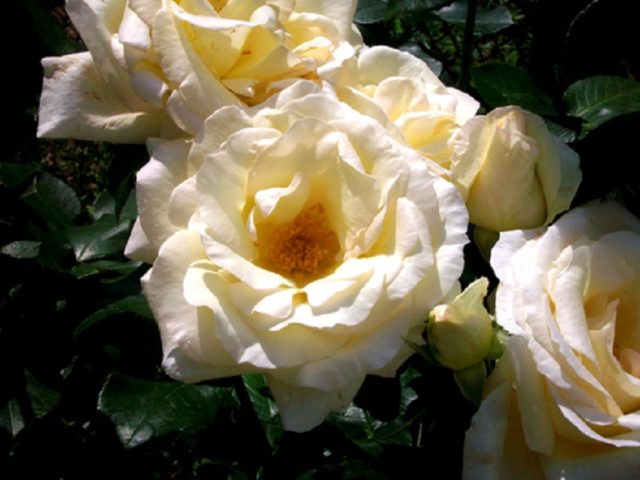
After blooming, the flower changes its shape
Rose is often used to create wedding bouquets.
In addition to the external description, attention should be paid to other characteristics of the variety. Frost resistance of the Schneewaltzer rose corresponds to zone 6 (from - 6.7 °C to - 23.3 °C). Therefore, with proper preparation for winter, the Schneewaltzer rose can be grown in various regions.
The plant blooms repeatedly or in waves, starting in late May or June. It depends on the climate of the region. Ends in October. At the moment of the first intense flowering of the Schneewaltzer rose, 1 flower or a cluster of 2-3 flowers appears on the stem, then the waves continue until the end of summer.The only drawback is that the flowers live on the bush for no more than 5 days. When it’s hot, the period is reduced to 2-3 days. They are formed on the shoots of the current year. Gardeners also note the very poor resistance of the climbing variety to rain.
Advantages and disadvantages
The Schneewaltzer variety of roses does not create any difficulties when growing even for gardeners in areas with a cool climate. The climbing perennial can be found almost throughout the entire territory of the Russian Federation, thanks to a large list of advantages.
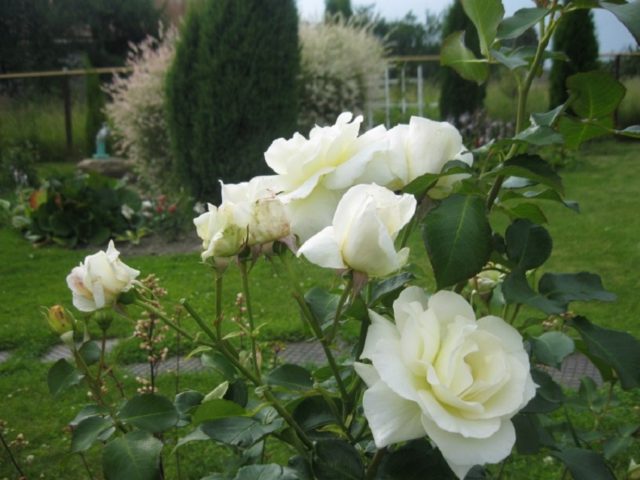
Even a young bush can refresh the landscape of a site
Advantages of the variety:
- good frost resistance;
- lush long-lasting flowering;
- decorativeness of flowers and bushes;
- large size and doubleness of flowers;
- pleasant aroma;
- re-blooming;
- resistance to major crop diseases.
The climbing rose also has some disadvantages:
- intolerance to active sun;
- weak bud ovary in rainy weather;
- damage to flowers by rain;
- the difficulty of bending down shoots when covering for the winter;
- limited number of reproduction methods.
Despite the disadvantages, gardeners love to grow the Schneewaltzer variety on their plots.
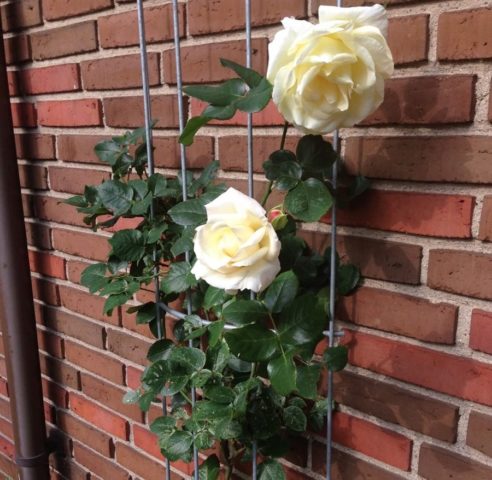
The support will help direct the plant in the right direction
Reproduction methods
The only way to preserve the varietal characteristics of a climbing rose is cuttings.
To take cuttings of the Schneewaltzer rose, you need to choose a strong bush, but not an old one. Age 3-5 years. Branches should be cut after the first wave of flowering. Select shoots 5 mm thick, cut off parts with five buds. Make sure the tool is well sharpened and be sure to disinfect it. Make the upper cut straight above the bud by 2 cm. The lower one should be oblique under the first eye.Treat with root former (according to instructions). Dig a hole 30 cm deep, fill with compost and grass. Set the shoot at an angle of 45°, leaving 1/3 of the length above the surface.
Then it remains to ensure that the Schneewaltzer rose seedlings are regularly and abundantly moistened. Before the onset of winter, it is necessary to build a dome over the cuttings and cover it with covering material.
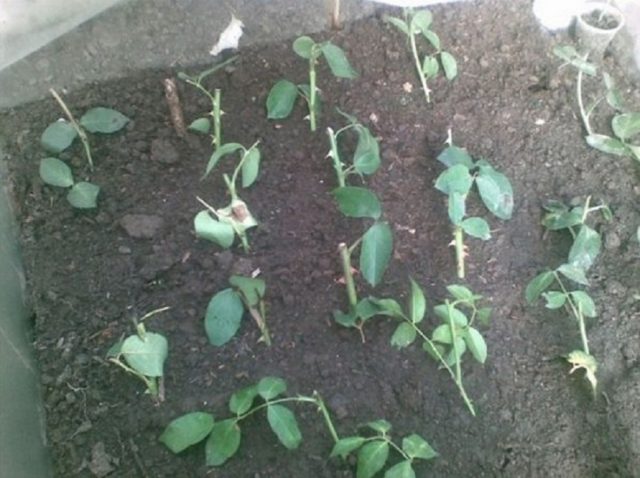
Using cuttings you can get a large number of seedlings
Planting and caring for the climbing rose Schneewaltser
If a climbing variety seedling is purchased for the first time, the purchase should be made in licensed stores or trusted nurseries. In this case, you can be sure that the plant will be healthy and the variety will not be different. Growing a Schneewaltzer rose is not difficult, the main thing is to adhere to the basic rules:
- Do not miss the planting deadline. In areas with an early onset of winter, the Schneewaltzer rose should be planted during April and the first half of May. In the fall, you can plant a climbing rose in warm regions so that it has time to take root before the onset of frost. The best time is early October.
- Select a place with the necessary criteria. The Schneewaltzer variety needs a lot of mercy. The bush is growing a lot. Therefore, there should be no other plants or buildings at a distance of 2 m from the planting hole. Lowland is not suitable; good lighting and ventilation are needed. The ideal condition is sun until lunchtime, then shade. In this case, the Schneewaltser rose will receive enough light, and the leaves will not fade from the sun's rays.
- Prepare the soil. Be sure to add humus, compost, sand and peat to clay soil. Add clay with turf soil and humus to the sandy one.Important! The variety grows in soil with low acidity.
- Prepare the Schneewaltzer rose seedling for planting. It is necessary to carefully examine the root system of the bush. Trim all rotten, damaged and moldy roots. Soak for 24 hours in a growth stimulator solution.
After carrying out the preparatory activities, you can begin planting a seedling of the climbing rose Schneewalzer.
The algorithm for planting Schneewaltzer roses is as follows:
- dig a planting hole measuring 60x60 cm;
- pour water thoroughly;
- pour in a nutrient substrate (humus + peat + sand in equal quantities);
- place the rose seedling in the hole;
- deepen the root collar by 3-4 cm;
- cover the roots with fertile soil and compact them a little;
- water the bush.
When the soil settles, fill it again to the desired level.
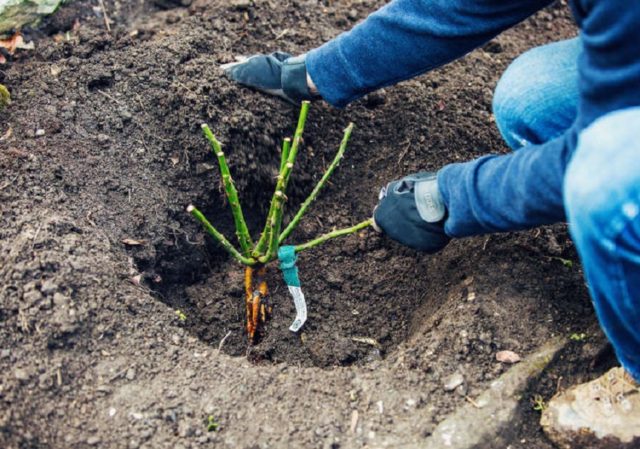
It is important to maintain the planting depth of the bush
Caring for a climbing variety consists of traditional items. However, they must be performed rhythmically and carefully, then the rose blooms magnificently and does not get sick. Basic care measures:
- Watering. Schneewalzer loves moisture, but does not tolerate stagnant water. It is optimal to water the bush after the top layer of soil has dried. When watering for the first time, add a little growth stimulator (phosphobacterin or heteroauxin) to the container. In dry weather, twice a week is enough. One plant requires 20 liters of water, settled and warm. You need to reduce the frequency of watering in August, and stop completely in the fall.
- Climbing variety does not grow in poor soil. In the spring you will need to apply nitrogen-containing fertilizers, and at the time of flowering - potassium-phosphorus fertilizers. The last time you can feed the variety is in early August.In autumn, it is enough to lay a layer of humus on the circle around the trunk.
Important! In the first year after planting, the Schneewaltzer variety cannot be fed. - Weeding. Another important element of caring for the Schneewaltser rose. The root system needs nutrients and air. The presence of weeds worsens the condition of the roots.
- Trimming. Will need to be done throughout the growing season. In spring, it is necessary to remove weak and frostbitten shoots. Also carry out the formation of the crown of the Schneewaltser rose. Cut the lashes left for rejuvenation into 2-4 buds, the rest into 5-7 buds. In summer, it is necessary to remove faded inflorescences in a timely manner. This technique will stimulate the second wave of flowering. In the fall, also remove all damaged branches and thin out. Once every 4-5 years, anti-aging pruning is necessary. Almost all shoots should be cut off, leaving 2-4 buds.
You need to trim the bush only with a disinfected and well-sharpened tool.
- Preparing for winter. The flower needs to be prepared for wintering. First, water the bush well. Then gently press the lashes of the Schneewaltser rose to the ground and cover with covering material. The beginning of the procedure is October-November, depending on the climate. If it is not possible to bend the branches, then you need to install arcs over the rose bush and cover the top with material.
To retain moisture and reduce the number of weeds, it is recommended to mulch the circle around the trunk.
Pests and diseases
Gardeners have different opinions about the degree of resistance of a variety to diseases. They note that in cooler regions the plant's immunity is reduced. For example, in USDA zone 4 (from - 34 to - 29 ° C), the variety may suffer from powdery mildew or black spot.This only happens if the agricultural practices for growing climbing roses are violated. The use of fungicides will be required. Additionally, spring preventive treatment with Bordeaux mixture should be carried out.
The climbing rose Schneewaltser is almost not affected by pests. Sometimes bronze insects or aphids may appear, especially if they are present on the site.
Application in landscape design
Most often, the variety is used for vertical gardening in various areas. Rose Schneewalzer will perfectly decorate an ugly area, cover an unsightly façade or building. Decorate a recreation area or gazebo, arch or pergola. Suitable for any style.
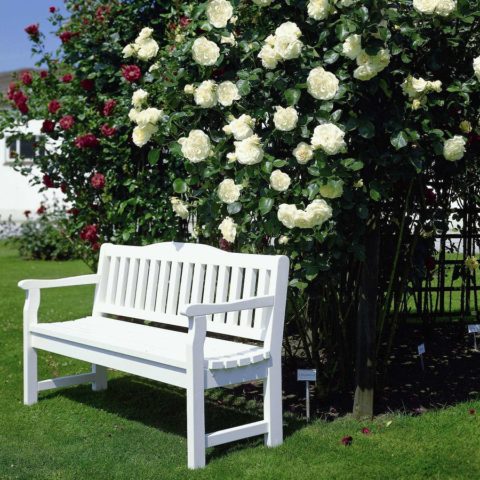
Even without a large number of neighbors, the perennial looks very decorative
When creating a composition, it should be taken into account that the bottom of the perennial is often exposed. Therefore, you need to think in advance which cultures can hide this problem. The second option is multi-stage bush trimming. At the same time, the large flowers of the variety will decorate any level. Russian gardeners often grow the Schneewalzer variety in the form of a scrub. This method has many advantages - it is decorative at a high level, it is easy to prepare the rose for winter, powerful shoots do not need support.
Conclusion
The climbing rose Schneewaltzer is a luxurious plant for any area. The bush does not require special attention and responds well to compliance with agricultural technology requirements. All necessary care items are listed in the variety description.
Reviews of the climbing rose Schneewaltser
The Schneewaltzer climbing rose variety is best characterized not only by photos and descriptions, but also by reviews from gardeners.
